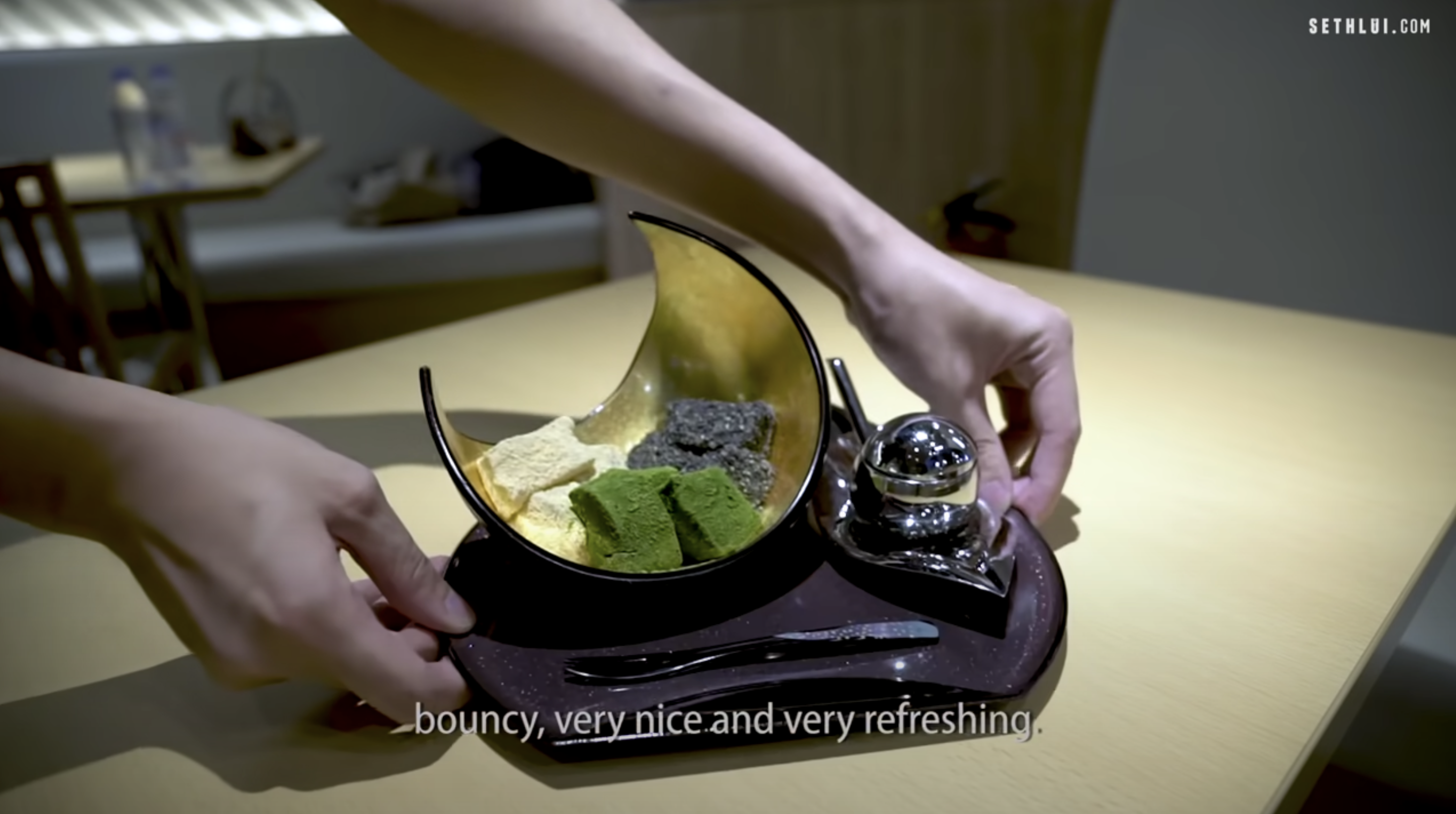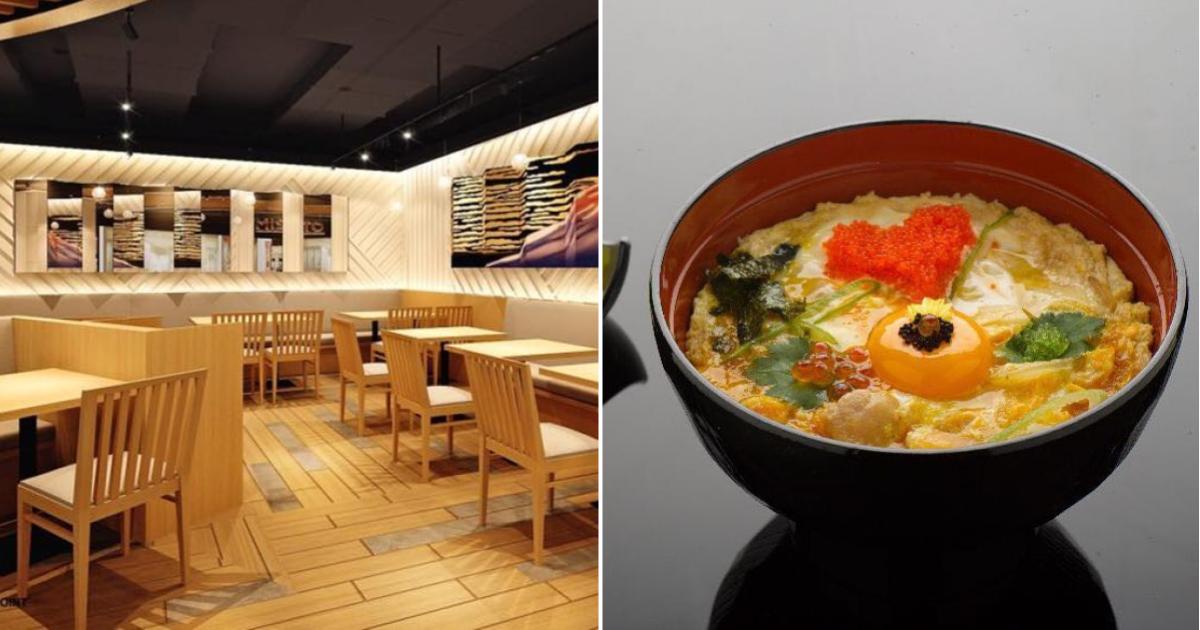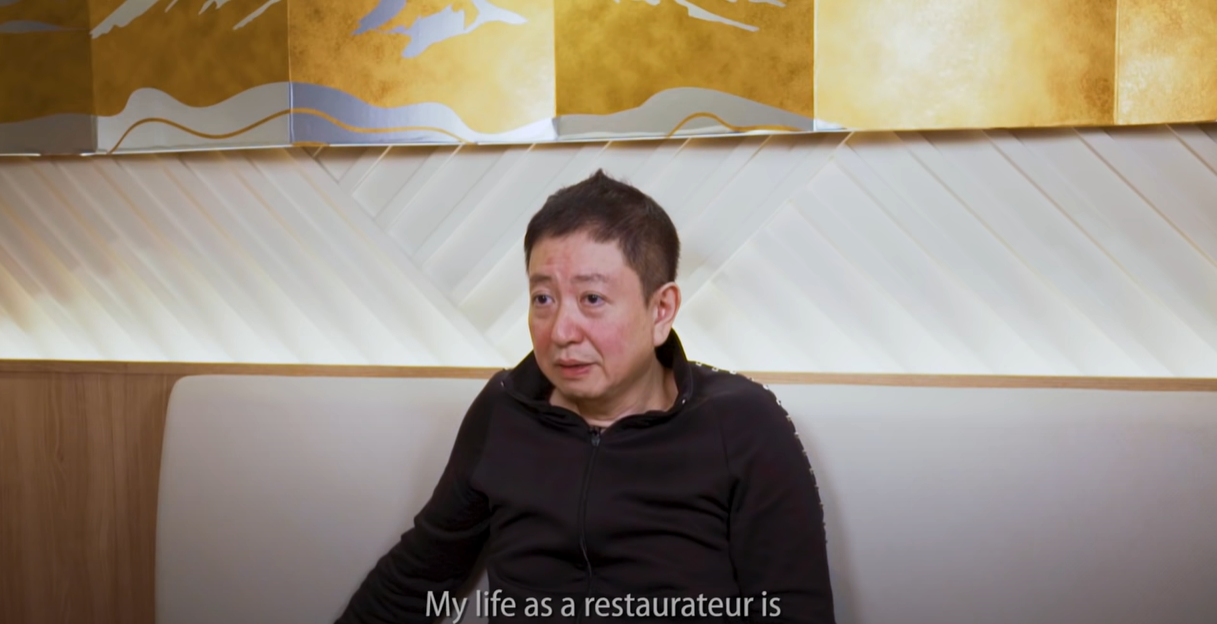Follow us on Telegram for the latest updates: https://t.me/mothershipsg
You might remember this Seth Lui interview from a while back.
It was real popular and remains one of their most viewed videos. There was also a part two.
In these videos, Tony Young, the owner of Japanese eatery Misato, spoke frankly on the challenges of the restaurant game in Singapore and the existential battle his restaurant was facing.
It’s a fascinating interview, with incisive observations of the F&B scene in Singapore and really well-shot food porn.
Like this.

Handmade Warabi Mochi.
Young also shared the depth of his financial woes.
In a particularly memorable quote, he gave this succinct financial timelapse as a restaurateur.
“Ironically, when I was 44 years old, I had four million. Now I’m left with S$44.”
As mentioned above, the video did really well, and with that added publicity, eateries tend to see a spike in customers.
However, a business aiming for long-term sustainability cannot lean too heavily on momentary publicity.
Some commenters on the video, while supportive, were also doubtful about Misato’s long-term survival outlook, pointing to some factors that they felt might impede their continued existence.
Issues like Misato’s insistence on using freshly imported ingredients from Japan and a not-that-bustling mall location.
But hey, as long as the next one or two years didn’t present any major “shut down the world” type obstacles, it seemed like they could definitely pull through.
That was in 2019.
Now if you remember, 2020 was not a good year, and it was a particularly tough period for the F&B scene.
Perhaps not the most ideal conditions for a restaurant looking to improve its lot.
So imagine my surprise when three years after that video and fresh off a world-altering pandemic, I found myself tucking into some delicious made-from-scratch Warabi Mochi at Misato.
 Image from Misato because the photo I took was shaky and bad.
Image from Misato because the photo I took was shaky and bad.
It had survived.
In fact, from my conversations with Young and Misato’s longtime restaurant manager, Joan, the place was doing quite well.
Quality
The restaurant’s Google reviews are also overwhelmingly positive.
And the negative reviews are more often tinged with complaints of administrative issues such as seating or service rather than the food itself.
As Young told me, “they can complain about anything, but they can’t say my food is bad”.
So it’s doing good, but why?
There are a lot of factors in why a restaurant does well. Young himself cited the resuming of dining in as a significant factor in Misato’s resurgence.
But instead of focusing on a myriad of factors, I want to look at something touched on earlier.
The ingredients.
A point of pride for Young is how many of his ingredients are imported directly from Japan.
According to Joan, the vegetables they use, such as Japanese cabbage, mitsuba (parsley), menegi (green onion shoots), namafu (steamed gluten), shitake mushrooms, and hoba leaves (magnolia leaves), are all imported from Japan.
Condiments such as mayonnaise are also brought in from Japan.
They even get their drinking straws and gloves from Japan.
From an outsider’s perspective, some might wonder: Do straws from Japan really elevate the dining experience all that much?
But we’ll get back to this question later.
For now, I want to focus on this.
Vegetable oil
But not just any vegetable oil because — you guessed it — it’s directly from Japan.
It hasn’t been cheap.
Here’s the caption from Misato's October 2021 Instagram post about how prices increased due to the pandemic.
“Despite exorbitant rising oil prices and shipping cost due to the Covid-19 pandemic, we insist on continuing to use this premium quality cooking oil from Japan. The price is five times more expensive than the normal cooking oil.
We didn’t pass on this cost to customers so that they can still enjoy our food at affordable prices. We are one of the very rare restaurants in Singapore to use such expensive, healthy and good quality Japanese cooking oil.”
Five times higher.
And according to Joan, it has doubled from 2021 to 2022, with each tin now commanding a 3-digit figure.
If you think that’s a bit excessive, you’re not alone.
Even the suppliers themselves tried to dissuade Misato from going all in on their vegetable oil purchase.
Suppliers told Young that the size of his restaurant and the relatively affordable pricing of his food might not be conducive to importing these expensive ingredients.
Instead, they suggested Young use cooking oil from Malaysia instead.
And it’s not as if they were advocating an inferior-quality oil. The supplier had assured them that the Malaysian supplies he was offering were comparable to those made in Japan.
According to this particular supplier, only a few, if any, Japanese restaurants in Singapore use this brand of cooking oil.
So it wouldn’t be that much of a qualitative backpedal if a cheaper, still very good, and more supply chain-friendly option was taken.
But Young declined.
This has led to Young being the only person that gets this particular brand from the supplier.
This invariably means a higher cost, as there is no discount through bulk supply.
What is quality?
Which begs the question, why?
Why do all this?
Why is this particular oil so special? What’s the benefit of mayonnaise secured from Japan? Are the gloves they import made from special Japanese mystical finger slots?
But I feel while these are valid questions, that’s missing the whole point of what Misato and Young are all about.
Misato has been using this brand of cooking oil since 2017.
Young found it during a sourcing trip in Japan. And here’s Joan describing why they like this particular brand.
“This oil is specially for cooking tonkatsu and fried food and it doesn’t turn black so easily and the food is fragrant with no oily food odour. It’s a renowned brand in Japan and has undergone stringent quality processing and checks.”
She also mentioned other beneficial health effects as part of why they chose it.
Now is it beneficial for health? I don’t know. The literature online seems way less clear-cut. Although it is entirely feasible that some vegetable oils are better than others.
Young obviously thinks so.
And that there is actually the point.
In his Seth Lui interviews, he is adamant that he would never use inferior ingredients. To him, “cheating” customers with these tactics will ultimately lead to them not returning.
And if that mentality led to creating an experience that would encourage repeat customers, say after a lengthy layoff from an airborne virus, that might have helped when they reopened for business.
Nitpicking over whether imported straws or gloves are necessary isn’t the point. It is whether Young thinks having these products ultimately leads to a higher-quality restaurant for the customers and himself.
Pride
Faced with over S$2 million in losses, most establishments would cut down on costs.
The cost of ingredients is nothing compared to rental fees, but that albatross doesn’t appear to be going down anytime soon.
Therefore any excess spending that can be trimmed would almost certainly be unceremoniously taken to the woodshed.
But for some reason, their gloves are still from Japan.
Young’s story is so interesting to me because he’s not a lifelong chef who finally got his own restaurant or some new-age foodie obsessed with pushing the boundaries of fusion food in Singapore.
In fact, he seems genuinely disgruntled about his life as a restaurateur.
This, of course, is not some new revelation. Here is the first sentence of his Seth Lui interview.
During our conversation, Young told me he would sell his restaurant in a second if he could find a buyer.
This might be an odd thing to find out after reading about all the quality control measures he insists on for his restaurant.
Maximise profits by cutting costs, skimp on ingredients a bit, and maybe that restaurant’s books would look much better to potential buyers.
That theoretically would fit better with the mentality of someone trying to sell off their place.
But that’s not how Misato is run — even when the mother of all supply chain disruptions took place, a ready-made excuse to scale back on those imports, they just forked out more to keep to their vision of quality.
So while the lengths they go to in order to facilitate this vision of quality and authenticity might not be considered pragmatic, it is undoubtedly a very singular, untarnished attempt at realising that vision.
And after hearing so much about how some F&B businesses have had to cut down on ingredients to keep their bottom lines manageable, it’s pretty refreshing to see a different approach from the norm working out for people.
Because whether you agree with his methods or not, at least you can’t say his food is bad.
Top image from Misato on Facebook
If you like what you read, follow us on Facebook, Instagram, Twitter and Telegram to get the latest updates.




